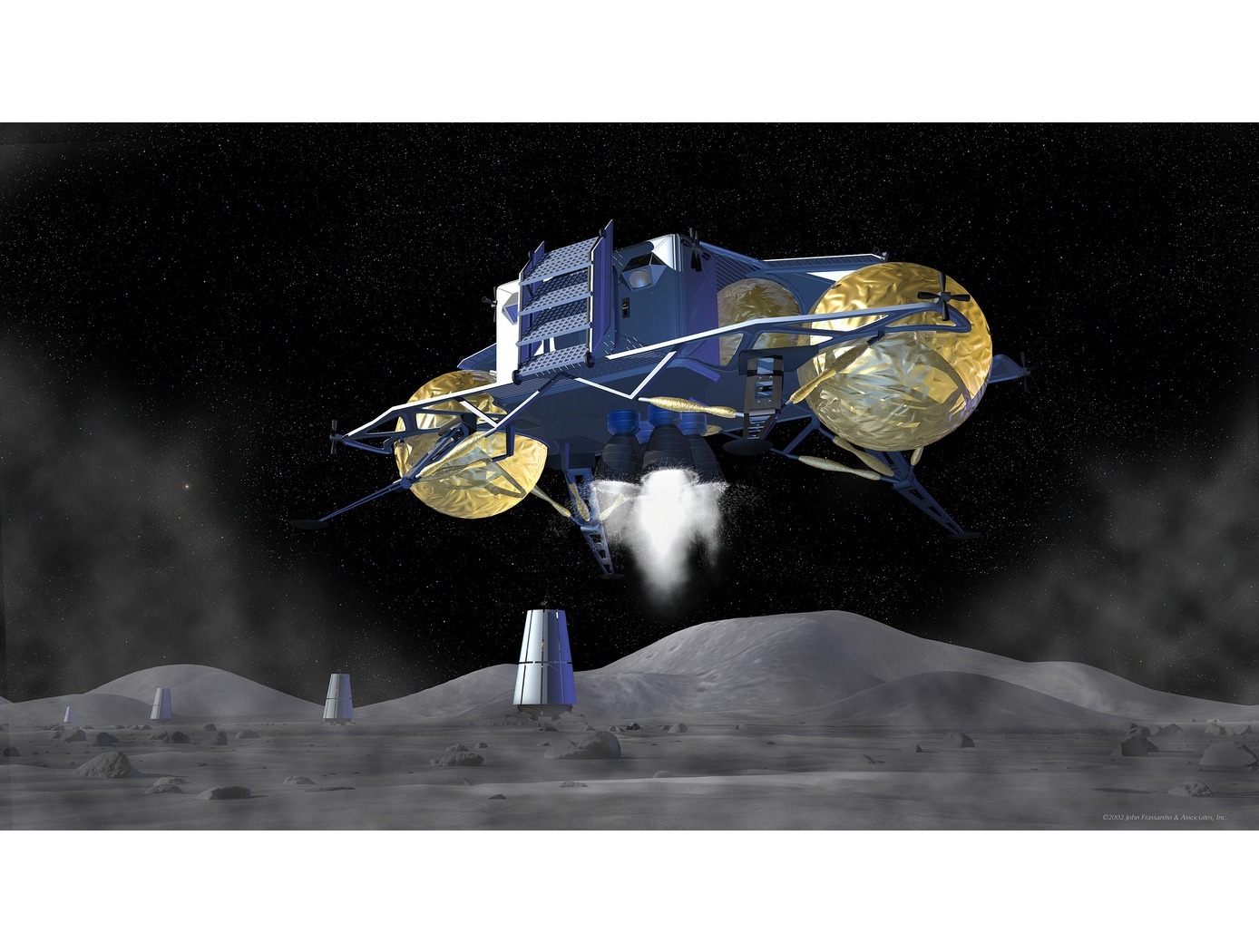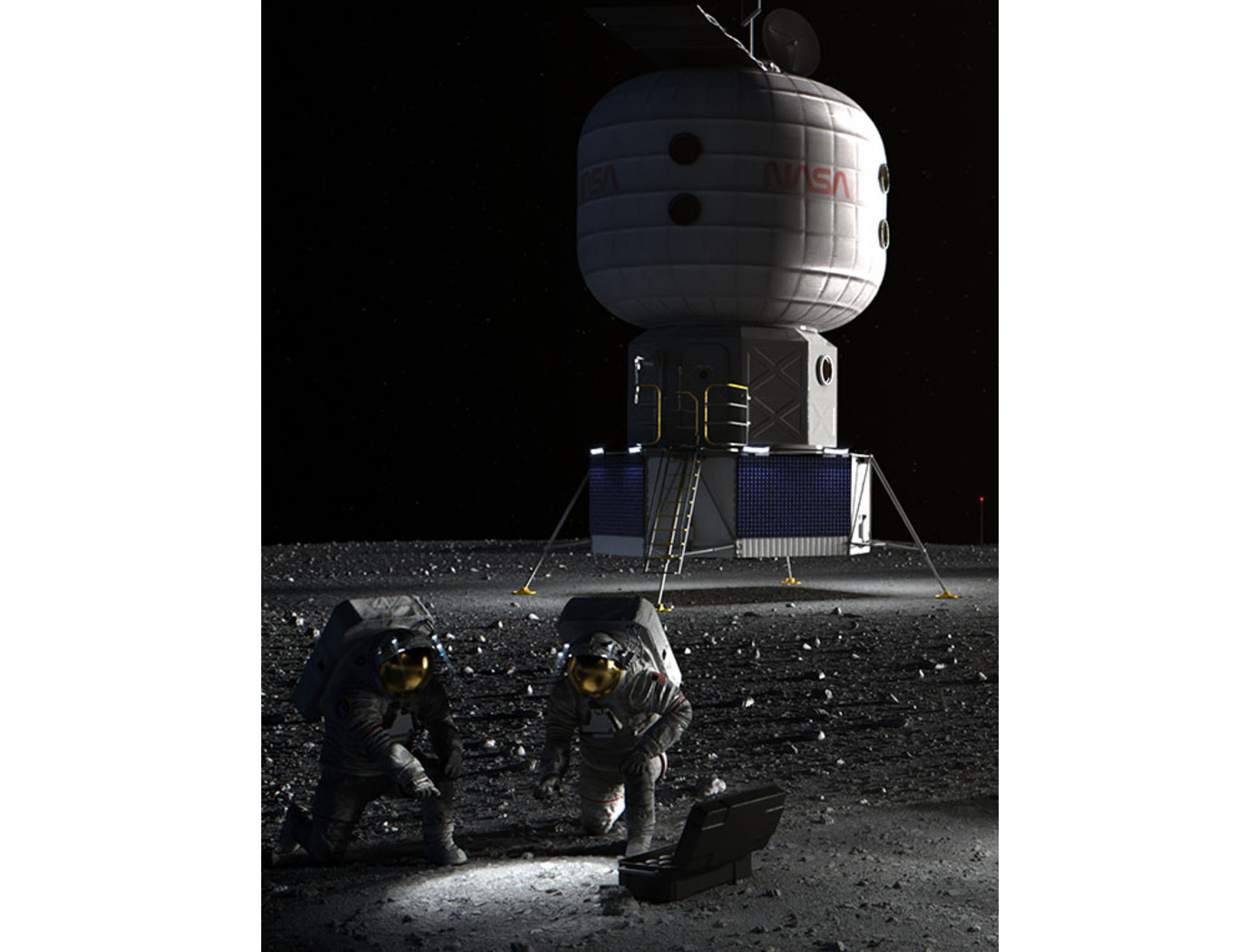Search
Manufacturing

Lunar Landing Pads
The jointly developed interlocking paver design consists of a molded solid material with tapered interlocking features that interface with features of an opposite gender in three orthogonal directions. This establishes a toleranced connection between the pavers that locks down six degrees of freedom.
More specifically, the system consists of two types of pavers: polygon and spacer pavers. Both are symmetrical about the longitudinal and transverse axes and are designed to interlock securely with one another in a checkerboard pattern. The polygon paver features an octagonal top level and a rectangular bottom level with protrusions and recessed notches. The spacer paver has an elongated center portion with isosceles trapezoid extensions on the top level and a rectangular bottom level with protrusions and notches. The interlocking design locks down six degrees of freedom, providing enhanced stability and preventing the flow of exhaust gases between the seams to mitigate erosion of the underlying regolith.
The pavers could be constructed leveraging in-situ resource utilization (ISRU). Lunar regolith has been identified as a potential construction material. Additionally, the pavers could be installed via robotic assembly, reducing the need for human labor in harsh environments.
Robotics Automation and Control

Lunar Surface Navigation System
NASA’s reverse-ephemeris lunar navigation system is a concept for determining position on the lunar surface based on known orbits of satellites. In conventional GPS navigation systems, the GPS satellite transmits ephemeris data to a receiver on earth for determining position at the receiver location. Whereas for the reverse-ephemeris approach the receiver becomes the transmitter, and the satellite instead serves more as a fixed reference position with a known ephemeris. This simplifies the satellite requirements and also mitigates potential navigational disruptions that can otherwise arise in navigation systems that utilize satellite-based communications, for example from interference, jamming, etc.
The design consists of lunar surface S-Band (2,400 – 2,450 MHz) 10 W transceivers ranging with analog translating transponders on a three-satellite constellation in frozen elliptical orbits to provide continuous coverage with service to 300 simultaneous users over 1.8 MHz of bandwidth at the transponder. Digital bases systems are possible too. As compared to GPS-based navigation requiring four or more satellites costing 100’s of millions of dollars, the new NASA concept is based on using only three smallsats.
Power Generation and Storage

Lunar Experiment Support System and Handling (LESSH) Battery Charger Module (BCM)
NASA’s LESSH BCM is a compact, high-performance, ruggedized system designed to support extended science operations in harsh lunar environments. With a mass of 9.4 kg and dimensions of 50 x 25 x 10 cm, the BCM is engineered for seamless integration with the interface bank on the HLS. A 1.5-meter flexible harness with an EVA-compatible connector and removable dust cover enables reliable operation in austere environments. Astronaut-operated controls, such as a guarded power switch and LED indicators, simplify usability and reduce the potential for errors during high-stakes lunar operations.
The BCM is optimized for safety and efficiency, incorporating state-of-the-art power and charging capabilities. It supports charging of 28V astronaut-rated batteries with a power output rated at 215W and integrates a battery pre-heater to maintain optimal performance in extreme temperatures. The BCM features a 4-hour charge time with software adjustability for charging parameters such as current, voltage, overvoltage, and undervoltage setpoints. Battery longevity is ensured through passive rebalancing of cell voltages and advanced safety features. Its 2-fault tolerant hardware and adjustable safety setpoints safeguard against potential hazards. Additionally, the BCM supports 1000BASE-T Ethernet pass-through for high-speed data transfer.
Originally designed to extend the length of lunar surface science experiments by enabling astronauts to recharge instrumentation, NASA’s LESSH BCM may be desired by companies seeking to operate sensors on the lunar or Martian lunar surface. The design may also be suitable for terrestrial applications involving harsh environments where interchangeable sealed sensors must operate on their own or with rovers, robotics, and drones. The BCM is at technology readiness level (TRL) 4 (component and/or breadboard validation in lab) and is available for patent licensing.
manufacturing

Regolith-Polymer 3D Printing
The invention consists of a 3D print head apparatus that heats and extrudes a regolith-polymer (or other) mixture as part of an additive manufacturing process. The technology includes a securing mechanism, hopper, nozzle, barrel, and heating system. The securing mechanism attaches to a wrist joint of a robotic arm. The hopper, connected to the securing mechanism, has a cavity and a lower aperture. The barrel is an elongated, hollow member with its first end connected to the hopper's lower aperture and its second end connected to the nozzle's upper aperture. The heating system is positioned along the barrel and comprises a heater, thermocouple, insulator, and heating controller. The heating controller activates the heater based on input signals received from the thermocouple.
The print head apparatus also includes a feed screw, drive shaft, and motor. The feed screw is positioned within the elongated hollow member of the barrel, and the drive shaft transmits torque to the feed screw. The motor provides torque to the drive shaft.
An agitator is secured to the drive shaft, facilitating the consistent movement and mixing of the regolith-polymer mixture in the hopper. The nozzle includes a tube with an open end and an occluded end, allowing the mixture to be extruded through the lower aperture.
The jointly developed 3D print head technology enables efficient, large-scale additive construction using in-situ resources, such as regolith or other materials. The innovation reduces the need for transporting materials from Earth and allows for sustainable habitat development on the Moon or Mars. Given its adaptability to different crushed rock-polymer materials, the invention may also serve as an alternative to conventional Portland concrete construction on Earth.



